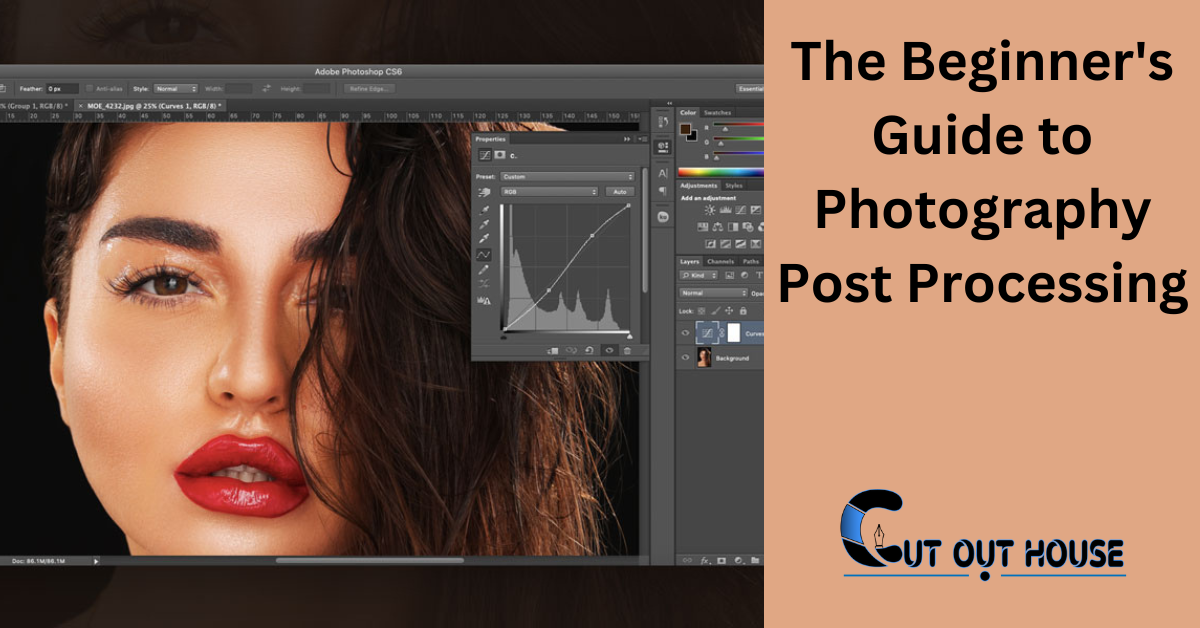The Beginner’s Guide to Photography Post Processing involves editing and enhancing photographs after they have been taken, using techniques such as cropping and adjusting brightness and contrast. Whether you’re a beginner or looking to improve your post-processing skills, this guide will provide valuable insights into the essential steps and techniques for enhancing your images.
From adjusting exposure to applying curves and color correction, this guide will help you take your photography to the next level. Whether you’re a beginner or an enthusiast looking to improve your photography skills, this guide will take you through the fundamentals of post-processing and provide valuable tips for enhancing your images.
Introduction To Post-Processing
Post processing in photography refers to the editing and enhancing of photographs after they have been taken. Techniques such as cropping and adjusting brightness, contrast, shadows, and highlights can be used to improve the overall quality of the image. By mastering post processing, beginners can take their photography skills to the next level.
Post-processing in photography refers to the editing and enhancing of photographs after they have been taken. This process is crucial in bringing out the best in your images. Common techniques used in post-processing include cropping, adjusting levels and curves, straightening the horizon, adjusting white balance, and boosting contrast and saturation. The rule of thirds is a composition guideline that can also be used in post-processing to create compelling and well-composed shots. By following a photography workflow that includes preparing your gear, creating a plan, and delivering your final photos, you can improve your post-processing skills and take your photography to the next level.
Essential Tools For Post-Processing
Post-processing is the act of editing and enhancing your photographs after they have been taken. Some essential tools for post-processing include:
- Choosing the right software: Selecting the appropriate editing software is crucial for efficient post-processing. Popular options include Adobe Photoshop, Lightroom, and Capture One.
- Hardware needs for efficient editing: Investing in a powerful computer with ample RAM and storage can greatly improve your post-processing workflow.
When it comes to editing your photos, there are various techniques you can employ:
- Cropping: Changing the aspect ratio or trimming the edges of your photograph to enhance composition.
- Levels and Curves: Adjusting the brightness, contrast, shadows, and highlights of your image for optimal tonal balance.
By following these post-processing techniques, you can enhance your images and bring out their full potential.
Basic Adjustments Explained
Post processing in photography involves editing and enhancing images after they have been taken. Cropping allows for changes to the composition and aspect ratio. Adjusting exposure and contrast can dramatically impact the overall look of a photo. Mastering white balance ensures natural and accurate colors in your images.
Advanced Techniques
When it comes to advanced photography post-processing, it’s essential to master working with curves and levels. These tools allow you to adjust the color correction secrets of your images, fine-tuning the selective editing tips for a professional finish. When working with curves, take time to understand how to manipulate the tonal range effectively. As for levels, use them to ensure proper color balance and contrast. Moreover, these advanced techniques are key to bringing out the full potential of your photography.
The Art Of Retouching
Learn the art of retouching with this beginner’s guide to photography post-processing. Discover techniques like cropping, adjusting levels and curves, and enhancing colors to take your photos to the next level. Improve your photography workflow and create stunning images.
Creative Post Processing
Enhance your photography skills with this comprehensive beginner’s guide to post-processing. Learn techniques such as cropping, adjusting levels and curves, and enhancing colors to bring out the best in your images. Discover the art of post-processing and take your photography to the next level.
Post-processing is an essential step in photography that enables you to enhance and edit your images after they have been taken. One of the creative post-processing techniques is applying creative filters, which can help you add a unique touch to your photographs. Black and white conversion is another popular post-processing technique that can give your images a timeless and classic look. Additionally, creating HDR images can help you capture a wider range of tones and details in your photographs. By adjusting the brightness, contrast, and other aspects of your image, you can create compelling and well-composed shots. Overall, post-processing is a critical step that can help you take your photography to the next level and produce stunning results.
Workflow Tips For Efficiency
The key to an efficient post-processing workflow is organizing your editing process to save time and effort. Start by sorting your images into folders based on the shoot date or event to locate them easily. When editing, use batch processing techniques to simultaneously apply the same adjustments to multiple photos. This helps maintain consistency across your images. Implement backup and archiving best practices by regularly saving your work and storing it on an external drive or cloud storage to prevent data loss. Streamlining your workflow and staying organized can enhance your post-processing efficiency.
Learning Resources And Communities
If you’re new to photography post-processing, various resources, and communities can help you improve your skills. You can find valuable online tutorials and courses on platforms like Skillshare and CreativeLive. Joining photography communities can provide you with support and feedback from fellow photographers. Additionally, some books and magazines are worth reading to gain insights into different post-processing techniques and styles.
Frequently Asked Questions
What Is Post Processing In Photography?
Post-processing in photography refers to the editing and enhancement of photographs after they have been taken. Techniques such as cropping, adjusting levels and curves, and enhancing brightness, contrast, shadows, and highlights are commonly used to improve the overall quality and visual appeal of the image.
It is an essential step in the photography workflow to achieve the desired results.
How To Get Better At Post-Processing?
To improve post-processing, straighten the horizon, adjust the white balance, boost contrast and saturation, and use the rule of thirds for composition. Practice and experiment with different editing techniques to enhance your skills. Regularly seek feedback and learn from tutorials and guides.
What Is The 3 1 Rule In Photography?
The 3 1 rule in photography is a composition guideline that places the subject in one-third of the image, leaving the rest more open. This often leads to compelling and well-composed shots.
What Are The 4 Steps To Photography Workflow?
The 4 steps to photography workflow are:
1. Importing and organizing your photos
2. Editing and enhancing your images
3. Exporting and saving the final edited photos
4. Sharing and delivering the photos to clients or for personal use.
These steps ensure a systematic and efficient process for managing and enhancing your photographs.
Conclusion
Post-processing is an essential part of photography that allows you to enhance and refine your images after they have been taken. By using techniques such as cropping, adjusting levels and curves, and applying various editing tools, you can create stunning and professional-looking photos.
Remember to straighten your horizon, adjust the white balance, and play with contrast and saturation to bring out the best in your images. The rule of thirds is also a helpful composition guideline to create well-balanced and visually appealing shots.
With practice and experimentation, you can improve your post-processing skills and take your photography to the next level.


























